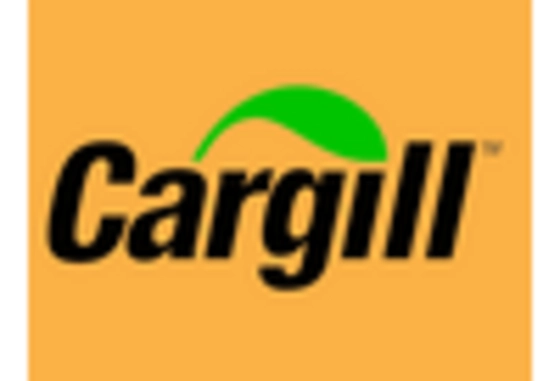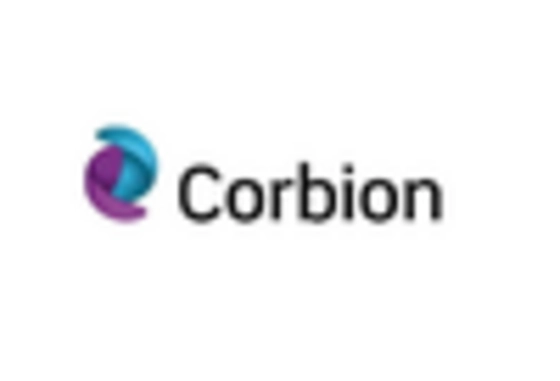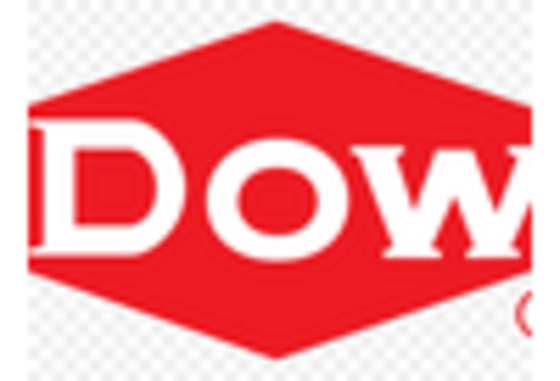Regulatory Support
Regulatory support is a key driver for the Ethyl Lactate Market, as governments worldwide are implementing stringent regulations to promote the use of environmentally friendly solvents. Policies aimed at reducing volatile organic compounds (VOCs) in industrial applications are encouraging manufacturers to transition to safer alternatives like ethyl lactate. This regulatory landscape not only fosters innovation but also creates a favorable market environment for ethyl lactate products. The increasing enforcement of environmental regulations is expected to boost the demand for ethyl lactate, particularly in sectors such as paints, coatings, and personal care products. As companies strive to comply with these regulations, the Ethyl Lactate Market is likely to experience a surge in growth, driven by the need for compliant and sustainable solutions.
Technological Innovations
Technological innovations play a pivotal role in shaping the Ethyl Lactate Market. Advances in production techniques, such as fermentation processes and biocatalysis, have improved the efficiency and cost-effectiveness of ethyl lactate manufacturing. These innovations are crucial as they enable producers to meet the rising demand while maintaining competitive pricing. Furthermore, the integration of automation and digital technologies in production facilities enhances operational efficiency, reducing waste and energy consumption. As a result, the market is likely to witness an increase in production capacity, which could lead to a more stable supply chain. The ongoing research and development efforts in this sector suggest that the Ethyl Lactate Market is poised for significant growth, driven by these technological advancements.
Sustainability Initiatives
The Ethyl Lactate Market is experiencing a notable shift towards sustainability initiatives. As consumers and manufacturers increasingly prioritize eco-friendly products, ethyl lactate, derived from renewable resources, stands out as a biodegradable solvent. This shift is reflected in the growing demand for sustainable alternatives in various sectors, including coatings, adhesives, and cleaning products. The market for ethyl lactate is projected to expand, with estimates suggesting a compound annual growth rate (CAGR) of around 5% over the next few years. Companies are investing in sustainable practices, which not only enhance their brand image but also align with regulatory requirements aimed at reducing environmental impact. This trend indicates a robust future for the Ethyl Lactate Market as it adapts to the evolving preferences of environmentally conscious consumers.
Diverse End-Use Applications
The diverse end-use applications of ethyl lactate significantly contribute to the growth of the Ethyl Lactate Market. This versatile solvent is utilized across various sectors, including food and beverage, pharmaceuticals, and cosmetics. In the food industry, ethyl lactate is employed as a flavoring agent and solvent for extraction processes, while in pharmaceuticals, it serves as a solvent for drug formulations. The cosmetics sector also leverages ethyl lactate for its solvent properties in formulations. The broad applicability of ethyl lactate is expected to drive market expansion, with estimates indicating a potential increase in demand across these sectors. As industries continue to seek effective and safe solvents, the Ethyl Lactate Market is well-positioned to capitalize on these opportunities.
Consumer Awareness and Preferences
Consumer awareness and preferences are increasingly influencing the Ethyl Lactate Market. As consumers become more informed about the environmental and health impacts of chemical products, there is a growing preference for natural and biodegradable alternatives. Ethyl lactate, recognized for its low toxicity and eco-friendly profile, is gaining traction among consumers seeking safer options. This shift in consumer behavior is prompting manufacturers to reformulate products to include ethyl lactate, thereby enhancing their market appeal. The rise in demand for clean label products is likely to propel the growth of the Ethyl Lactate Market, as companies respond to consumer preferences for transparency and sustainability in product ingredients.


















Leave a Comment